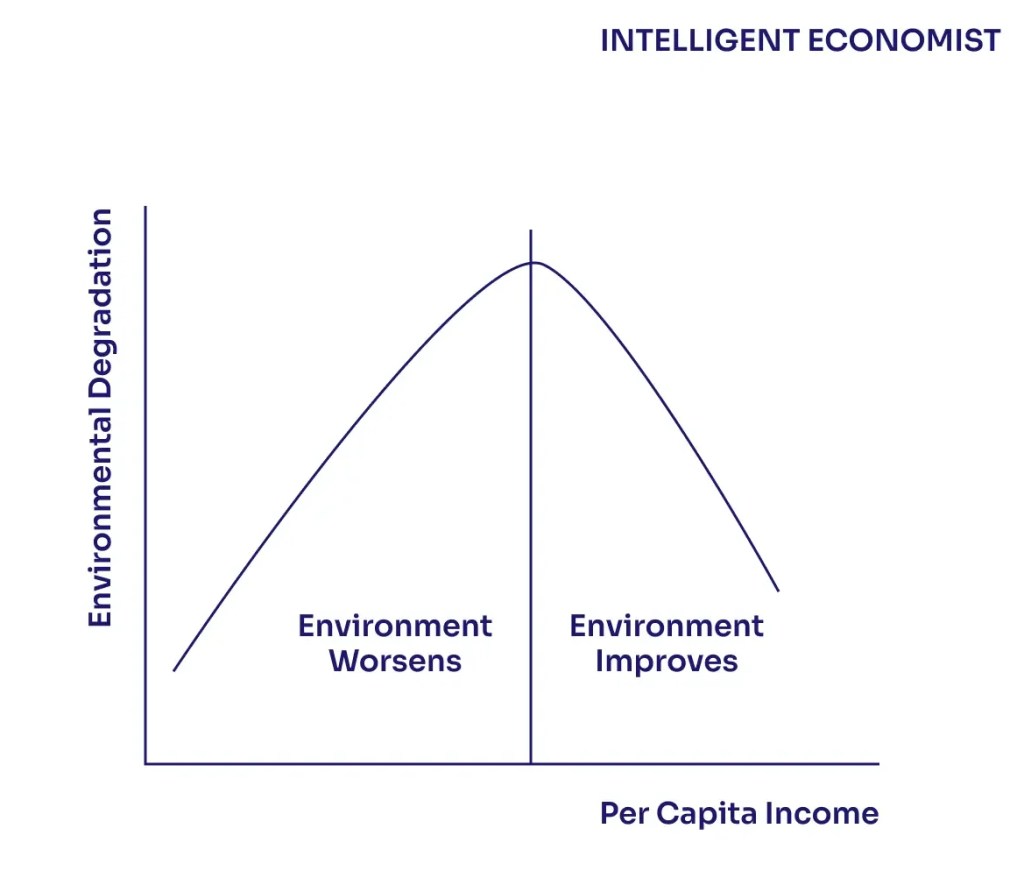This October, the World Trade Organization (WTO) kicked off “Trade and Environment Week 2022”. It was a week to explore the potential of trade policy to address a climate-friendly and circular economy. Before getting too far with the complex relationship between trade and the environment, let’s first establish the basics of international trade.
What is international trade?
Trade is the exchange of goods. Trading happens when each actor has its comparative advantage, and there is a mutual agreement that exchanging goods and services at a lower cost would benefit all.
Let’s imagine a scenario: country A, located next to the ocean, wants to specialize in producing seafood, and country B, which has more labor, is good at producing souvenirs. They agreed to focus on what they are each good at and exchange what they produce afterward so that the two sides could acquire the seafood and souvenirs necessary at a lower cost. The transaction described is called trade, and it can occur on a local, national, and international scale.
Is international trade good or bad?
When we think about the benefits of globalization, the obvious one is product diversity. We can enjoy products from around the world at all times of the year. But as we demand more specialized products and services, such as New Zealand Steak or Mongolian Cashmere, we are pushing for longer and more complex supply chains. In these supply chains come various modes of transportation and sometimes long-term refrigeration that are energy-intensive.
According to the WTO Informational Brief on Trade and Climate, the main contributor to the environmental footprint of trade is in the production and transport stages, generating 20%-30% of global GHG (greenhouse gas) emissions. The International Transport Forum (ITF) ’s estimations show that international trade-related freight transport is responsible for around 30% of all transport-related CO2 emissions from fuel combustion. One of the recommendations made by the ITF is to improve sustainable transport with an accelerated transition to clean energy, which would require more investment in green energy by the private sector.

The report also points out that in some situations, production-related emissions can outweigh transport-related emissions. For some sectors, international trade generates fewer emissions than the emissions required to produce something locally due to available natural and manufactured resources. ITF suggests that producing locally is not an absolute recommendation for all industries, especially fragile goods like food. Keeping the whole food system local would require more energy-intensive preservation to stagger supply following the lower demand it would trade. To read more about the sustainability of food systems, you can read our article The Road to a Sustainable Food System.
What are the caveats of measuring carbon footprint?
How do we quantify the environmental impact of trade? At first, the tendency is to measure the distance it travels. Food miles is a metric that measures the distance from where the food is grown to where it reaches the consumer. But is it accurate enough to reflect the total impact on the environment? It is undoubtedly an oversimplification as it only accounts for one form of impact. The Carbon Footprint of Global Trade report indicates that, for one, method of transport matters as total shipping and aviation emissions are fewer than road transport concerning international trade. Thus, a holistic sustainability assessment is more than necessary to reflect the environmental impact of trade.
One popular proposition is the Life-Cycle-Analysis (LCA), a measurement of resource consumption from “cradle to grave.” In the U.S. Environmental Protection Agency’s words, from the “initial gathering of raw materials from the earth until the point at which all residuals are returned to the earth.” This assessment integrates all the direct and indirect impacts and is conducted in four steps:
- goal definition and scoping
- inventory analysis
- impact assessment
- interpretation.
This is rather a general methodology, which leaves some degree of freedom to the industry and assessment center to adjust it based on a specific context. With this flexibility must come diligence and skepticism, as flexibility of the framework allows room for mistakes like double-counting and omission.

Trade and environment: is it always a trade off?
After reviewing the complex factors contributing to the sustainability assessment, it is evident that the question of whether the trade is harmful or beneficial to the environment is complex. The Environmental Kuznets Curve offers a handy way to visualize the relationship between trade and environmental degradation. As you can see in the diagram, the curve indicates that the environment tends to be bad at the early stage of development. After a turning point, the environment improves with a later stage of economic growth

As you can see in the diagram, the curve indicates that the environment tends to be worse off in the early stages of economic development. After a turning point, the environment improves and degradation increases with economic growth.
How do we ensure we are on the right track to transition to the stage to improve the environment? The working paper by the National Bureau of Economic Research proposes that income growth brought about by openness to free trade would lower pollution, and that neutral technological progress also helps lessen pollution. In this view, free trade’s total effect long-term appears to be good for the environment.
Could international trade be a solution instead of a problem?
We ought to reconfirm international trade’s positive role in improving human welfare. For instance, see how the OECD (Organization for Economic Co-operation and Development) discusses the positive effect of trade on employment. It brings diversified and differentiated products, generating income growth with long-term and short-term benefits.
The World Trade Organization suggests that international trade could be a pivotal engine to push for the diffusion of greener technologies and that greater energy efficiency can be achieved where trade fosters the exchange of information. There is a strong sentiment that businesses and nations need to work together to make market prices reflect the environmental impact and promote greater trade efficiency.
What can individuals do?
As responsible shoppers and conscious consumers, you can empower your choices by being aware of the environmental impact of trade. Next time you shop, consider how far the parts of the products in your basket have traveled or how water-intensive the material of those jeans is. Is there a more sustainable option on the shelf? If not, is there one available elsewhere? Have your friends got any tips?
We don’t need to chase the ‘perfect’ eco-friendly lifestyle, but just starting to think about how these broader structures impact your everyday choices is an incredible start. For more ways to make a difference through your financial decisions, see our article 10 Tools of Financial Activism.



